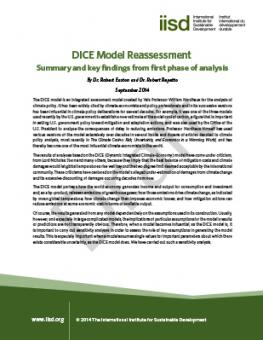
DICE Model Reassessment: Summary and key findings from first phase of analysis
This working paper analysis, developed by Dr. Robert Repetto and Dr. Robert Easton, analyzed the most prominent climate economics assessment model (DICE), and found that recent estimates used by the U.S. and others prove to be too pessimistic about the ability to balance efforts to fight climate change while maintaining economic growth.
The analysis reveals that if major emitting nations, such as the USA, adopt efficient policies to reduce emissions, world output over the period 2010-2050 would expand at 2.28% percent per year and warming would stabilize below a 2 degree increase. That is virtually the same rate, 2.31% per year, at which GDP would grow if global warming were not kept to safe limits. However, in the more protective scenario, emissions per unit of output would decline more than twice as rapidly.
You might also be interested in
Getting Where We Need to Go: Net-zero transport in Canada
This brief explains how a clean passenger transport system based on walking, cycling, public transit and electric vehicles can reduce costs for households and reliably meet Canadians' transportation needs while making cities cleaner, quieter, and safer.
February 2025 | Carbon Minefields Oil and Gas Exploration Monitor
In January 2025, 77 oil and gas exploration licences were awarded in seven different countries, with Norway leading in terms of embodied emissions.
Reforming Environmentally Harmful Subsidies
This playbook offers a strategic framework for philanthropic organizations to understand, engage, and advance environmentally harmful subsidies reform as a critical avenue for sustainable environmental and economic transformation.
State of the Sector: Critical energy transition minerals for India
This report presents a comprehensive strategy for securing a reliable supply of critical energy transition materials (CETMs) essential to India's clean energy and low-carbon technology initiatives.